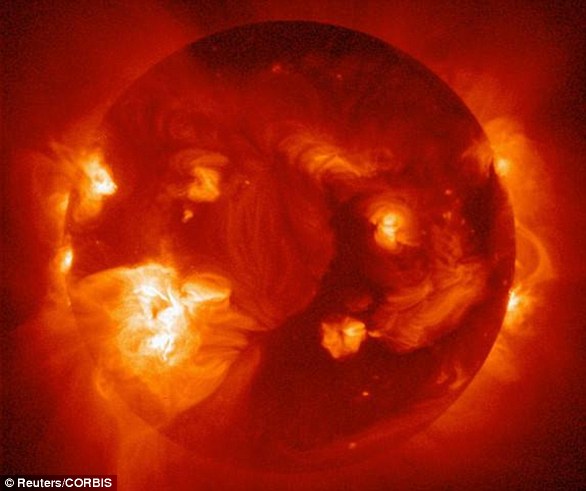Northern Lights will be visible as far south as BIRMINGHAM tonight as the sun unleashes a huge coronal mass ejection towards Earth – here’s the best time to see them
>
It is a stunning natural phenomenon that puts on a stunning display across the Arctic Circle and sometimes beyond.
But tonight not only will the northern lights creep as far south as Scotland, meteorologists say they could be visible over Birmingham and other parts of the Midlands.
That’s because the Sun has unleashed a massive coronal mass ejection (CME) that is set to hit Earth this weekend, creating a geomagnetic storm between Saturday and Sunday.
This will ejaculate Charged particles entering our planet will react with oxygen and nitrogen in the atmosphere to emit green and red colors over our poles.
The Met Office’s Space Weather Division said the aurora borealis would likely be visible in parts of Scotland, Northern Ireland and even “as far south as central England and Wales” if skies are clear.
BEAUTY: The stunning natural phenomenon of the Northern Lights can be seen as far south as Scotland (pictured), central England, Wales and parts of Northern Ireland tonight.
The good news for most observers in the UK is that cloud cover tonight should be almost non-existent, except in Northern Ireland.
the The best way to see the aurora borealis is to find a dark place away from street lights and with cloud-free skies, according to the British Geological Survey.
Experts say sky watchers should generally look to the north, although the stunning view could be in the sky or elsewhere.
They add that looking up around midnight offers the best chance of spotting it.
Although the northern lights are mostly seen in high latitudes, A coronal ejection caused by intense solar activity could make it possible to observe the scene farther south.
In a statement, the Met Office’s Space Weather Division explained how two coronal emissions will affect Earth.
“From later November 11 until November 12, a minor or moderate geomagnetic storm is expected to develop due to the arrival of a coronal mass ejection, with the possibility of a strong geomagnetic storm,” she said.
“There is less certainty regarding the timing of peak geomagnetic activity, but with clear skies, the aurora borealis will likely be visible over parts of Scotland, Northern Ireland and similar latitudes during the night of the 11th, with views being possible as far south as central.” England and Wales.’
Although our Sun gives us life, it also “sneezes” every so often, spewing billions of tons of hot plasma into space in the form of huge blobs of matter bound by magnetic fields — in other words, a coronal ejection.
It emits giant flares, bursts of powerful electromagnetic radiation – X-rays, gamma rays and radio bursts – accompanied by streams of highly energetic particles.
A coronal ejection typically takes about 15 to 18 hours to reach Earth.
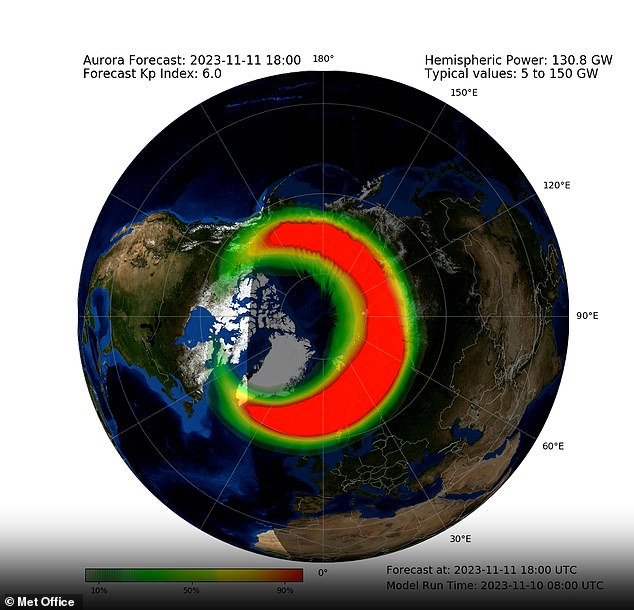
The Met Office’s Space Weather Division said the aurora borealis would likely be visible in parts of Scotland, Northern Ireland and even “as far south as central England and Wales” if skies are clear.
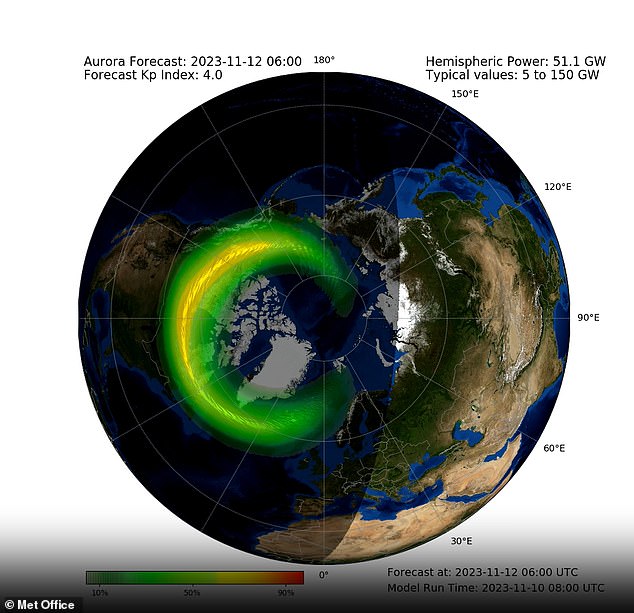
Although the northern lights are mostly seen at high latitudes, coronal mass ejections caused by intense solar activity could make it possible to detect the spectacle farther south.
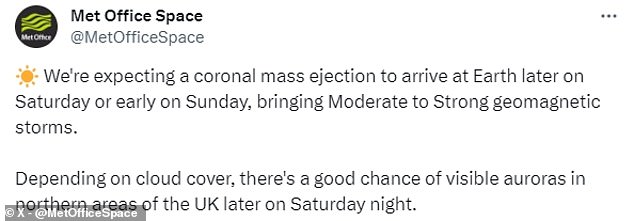
In a statement on website
Auroras appear when atoms in Earth’s high atmosphere collide with energetic charged particles from the Sun, creating stunning colors of green with a touch of pink, red and violet.
It is often seen in winter when the nights are cold, long and dark.
When a solar storm is heading toward us, some of the energy and small particles can travel along the magnetic field lines at the north and south poles into the Earth’s atmosphere.
There, particles interact with gases in our atmosphere creating beautiful displays of light in the sky – the aurora borealis, or northern lights. Oxygen emits green and red light, while nitrogen glows blue and violet.
The aurora borealis can be seen near the poles of the northern and southern hemispheres.
In the north the display is known as the Northern Lights, and in the south it is called the Northern Lights.
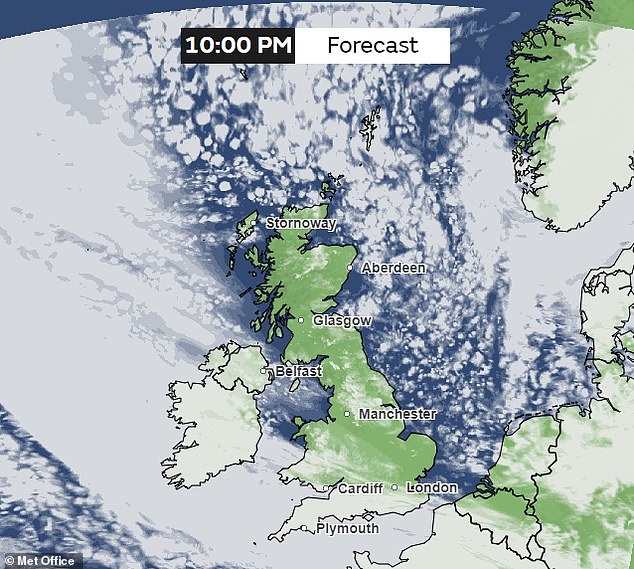
Clear skies: The good news for most UK observers is that cloud cover tonight should be almost non-existent, except over Northern Ireland.
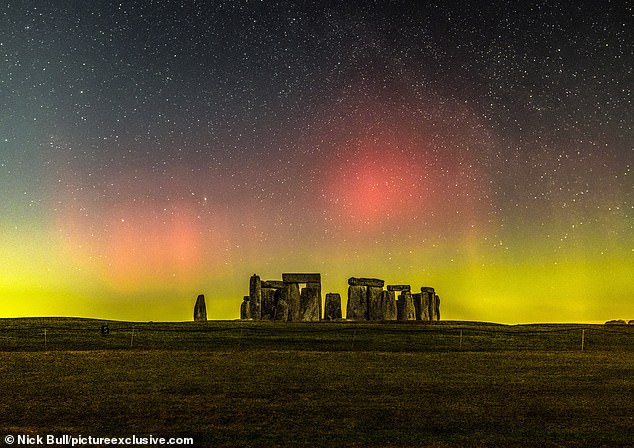
Auroras appear when atoms in Earth’s high atmosphere collide with energetic charged particles from the Sun, creating stunning colors of green with a touch of pink, red and violet. Pictured is Stonehenge illuminated by the northern lights in February this year
(Tags for translation)dailymail

